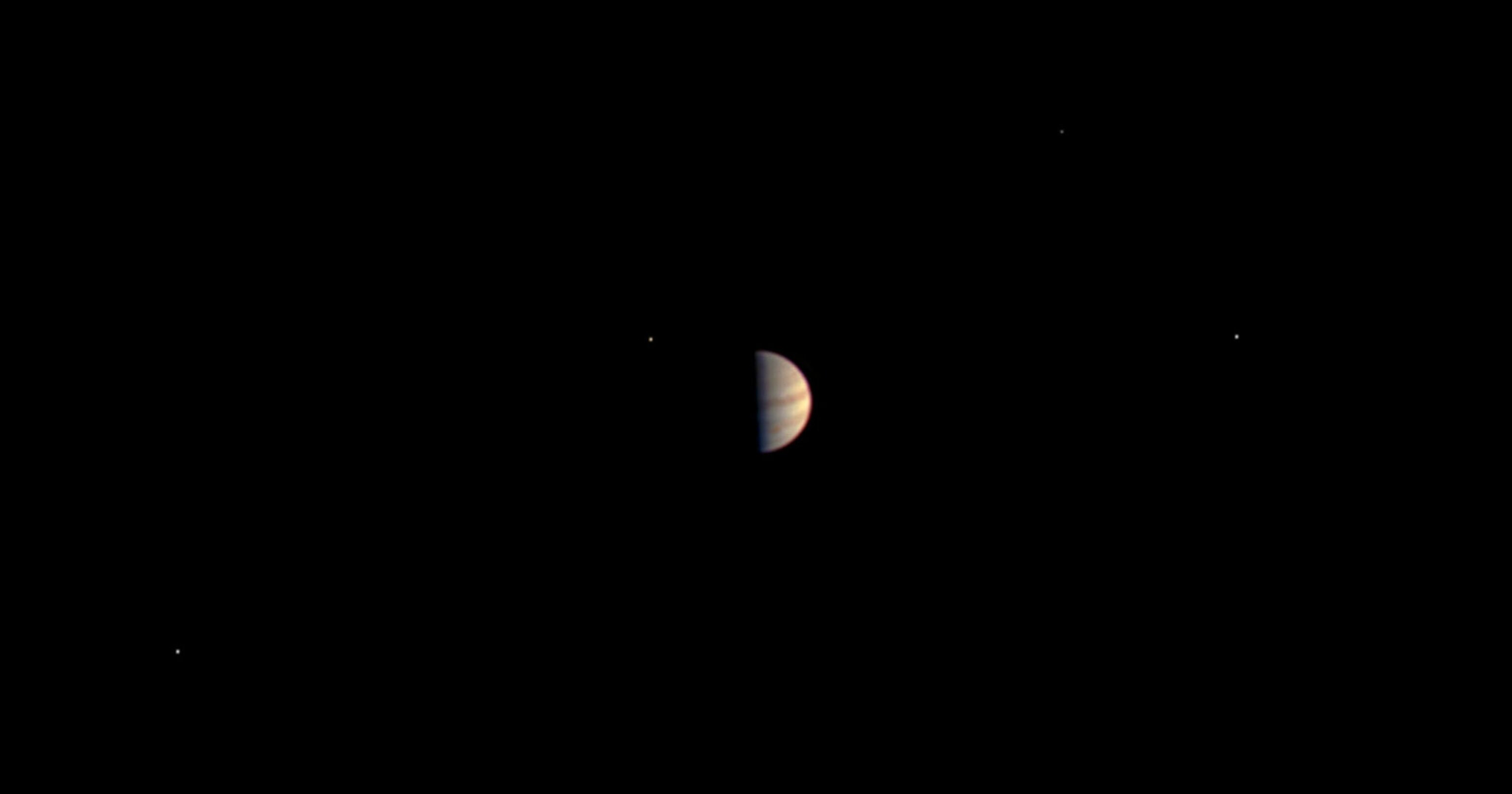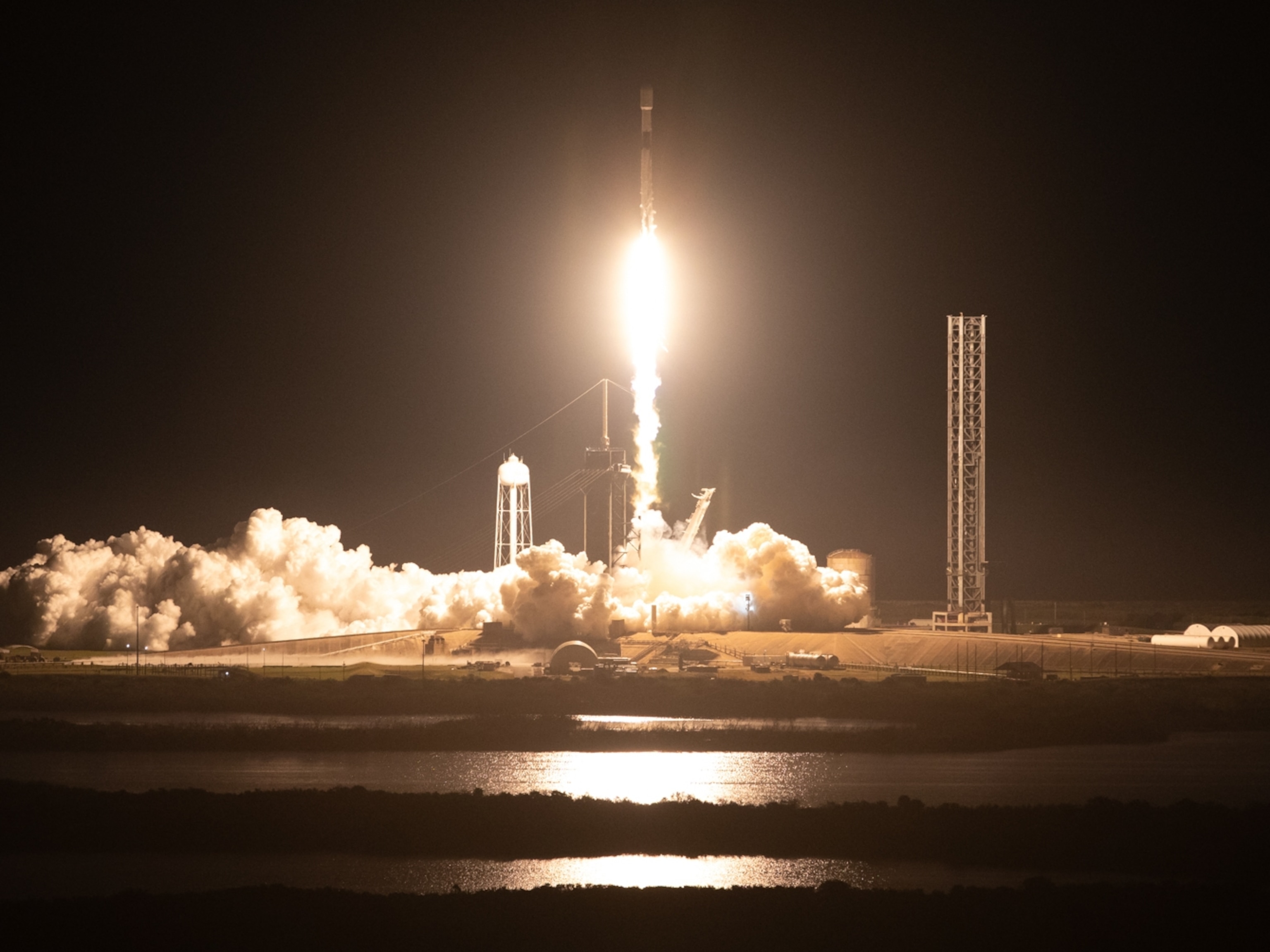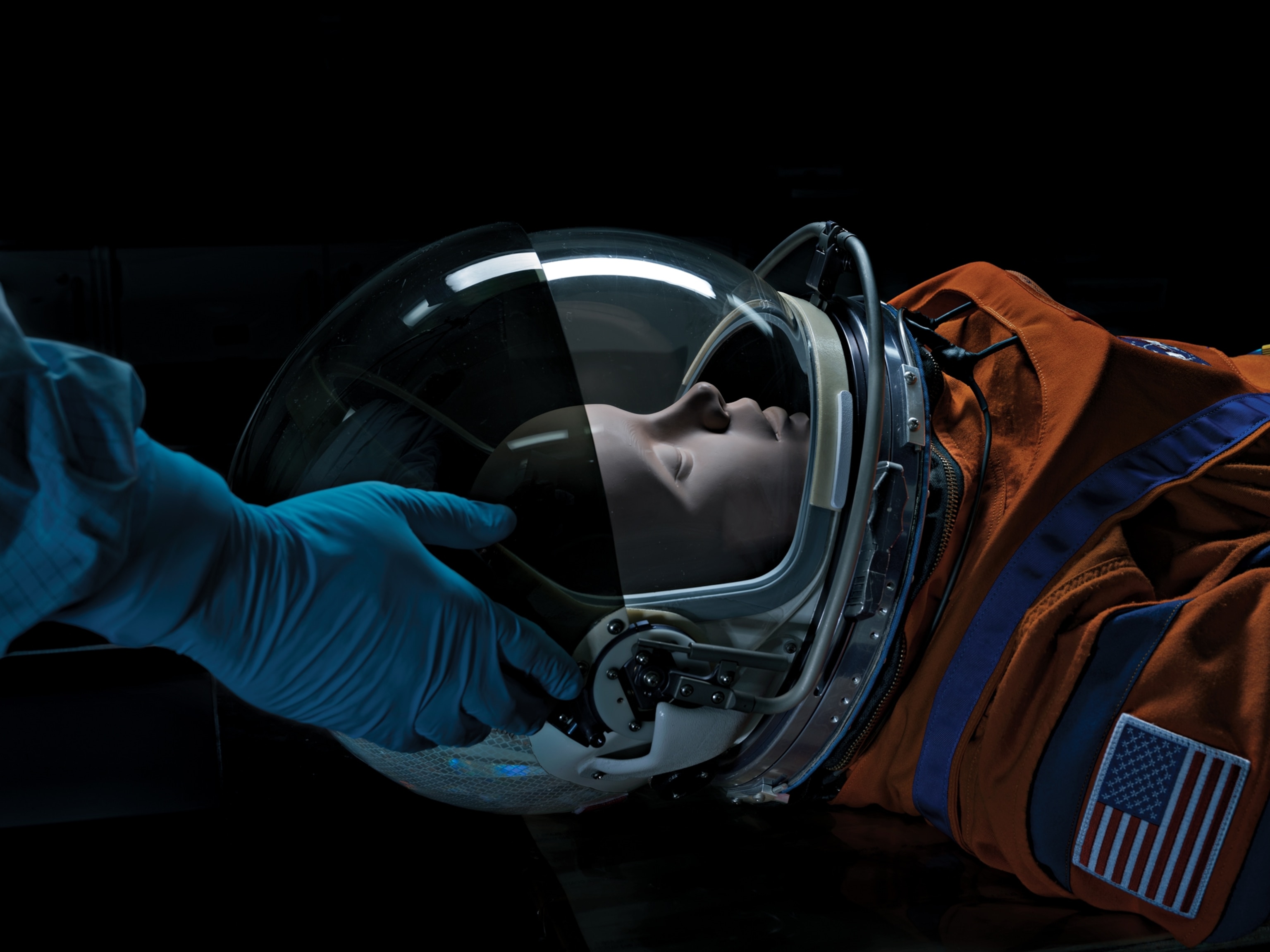
See Jupiter Through the Eyes of NASA’s Juno Spacecraft
This image of planet Jupiter and its four largest moons is the last thing Juno saw before shutting down its camera for its risky arrival.
Like an explorer approaching the summit of a mighty mountain, NASA’s Juno spacecraft is on the last leg of its journey to reach Jupiter, the largest planet in our solar system. This view, taken on June 29 from 3.3 million miles (5.3 million kilometers) away, is the last thing the basketball court-size spacecraft saw before turning off its instruments to prepare for reaching orbit.
Juno is slated to arrive at Jupiter at 11:18 p.m. ET on July 4, five years after it launched from Cape Canaveral in Florida. The probe is designed to study the giant planet’s deep interior, offering clues to what drives its famous swirling bands and storms, like the Great Red Spot, as well as whether gassy Jupiter hides a solid core.
To get into the right orbit, though, Juno will have to swoop in close to Jupiter and risk a daring plunge through the planet’s punishing radiation belts.
(10 Things You Need to Know About the Juno Mission)
As of 1:30 p.m. ET today, the spacecraft has crossed the orbits of three of the four Galilean moons, the large bodies discovered by Galileo in 1610 and seen in the image above. Later today it will cross the orbit of Io, the innermost of Jupiter’s moons and the most geologically active body in the solar system.
Particles spewing out of Io's volcanoes create one of the biggest dangers Juno will face during its mission. That’s because material from this close moon gets trapped by Jupiter’s powerful magnetic field and accelerated to nearly the speed of light.
These high-energy particles form belts of radiation around Jupiter that can fry electronics, requiring the spacecraft to carry its instruments in heavy shielding and to power down as much as possible right before arrival.
Jupiter’s faint rings present another big hurdle for Juno, principal investigator Scott Bolton said today at a press conference. Discovered in 1979, these rings made of rock and dust lie close to the planet, and Juno will have to fly near them with its engine nozzle open to slow itself down. If even a small particle gets into the nozzle during orbit insertion, the engine may stop firing, and Juno could have a very bad day.
But for Bolton, there is no reward without risk, and the team feels confident that they’ve given the spacecraft its best chance of orbiting safely and sending back unprecedented discoveries.
"We’ve done everything we can. We’ve protected everything we can,” Bolton said. “We’ve modeled it, but we’re going into unknown territory."
Follow Victoria Jaggard on Twitter.





